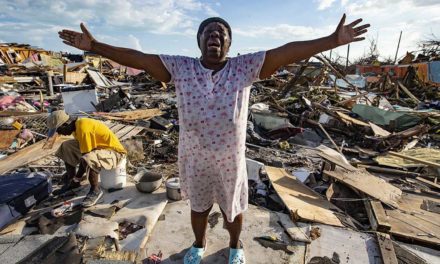As the United States tries to battle the world’s worst coronavirus outbreak, claiming nearly 70,000 lives, it must now address the arrival of the long Asian giant hornet – playfully dubbed the “murder hornets.”
Officially known as the Vespa Mandarina, the insects were first spotted in North America in August 2019 where they appeared in British Columbia, Canada. A few months later, the hornets were observed at the south of the border in Washington state.
The hornets are 2 inches (5cm) in size and multiple stings from the insect could present fatal for humans. Roughly fifty fatalities are linked to the insects per year with around thirty to forty deaths occurring in Japan where they are the most common.
However, humans are not typically the target for these murder hornets. During their “slaughter phase”, the hornets destroy honeybee hives in a matter of hours and subsequently feed the bodies of the bees to their young.
“You want to talk about beepocalypse,” University of Illinois at Urbana-Champaign Entomology Professor May Berenbaum told The New York Times. “They are sworn enemies of honeybees. I would say a bee’s worst nightmare. Probably the worst nightmare of a lot of people, too.”
Scientists are expecting further sightings of the hornets as they begin their life cycle in the spring. This is commonly when the queen hornet comes out of hibernation and looks for a den to build a nest in. By summer, the habitats are built and in the autumn months, worker hornets are sent out in search of food.
Experts hope to trap the queen during the spring to hopefully eradicate the species before they wipe out US bees.
How important are honeybees?
The population of honeybees are already vulnerable, with numbers significantly dwindling over the decades. It was reported that between 1947 and 2017, the number of colonies in the US had plummeted from 6 million to 2.5 million. Even more shocking, researchers from the University of Maryland reported that 40% of the country’s honeybee colonies were lost in a single winter – the highest number of deaths for its kind.
However, honeybees are incredibly important to human survival. They are the world’s most important pollinator of food crops and it is estimated that around 1/3 of the food consumed daily relies on pollination from bees.
Beekeepers have already reported several gruesome hive deaths in recent months, and the situation promises to become more dire once autumn rolls in if scientists do not manage to eradicate the species in time.
Photo Credit: The Times
- This Artist is Making the Underwater Arena His Canvas - 28th April 2021
- A Video Game that Promotes Peace and Conflict Resolution - 15th March 2021
- Netflix’s ‘Living Undocumented’ is a Difficult Series to Watch, and Exactly Why We Should - 9th March 2021






